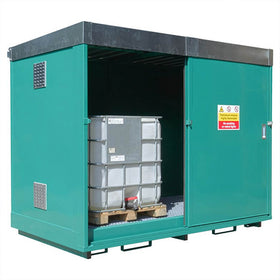Spill containment exercise in Guernsey invokes memories of Torrey Canyon disaster
Guernsey’s Oil Response Team conducted an exercise in spill containment this week in conjunction with States Works employees, Guernsey Harbour staff, civil protection volunteers and fire fighters.
The Oil Response Teams undertook a morning of theory based lessons and then tested equipment in the waters of Guernsey. This included setting up a boom to replicate the containment of oil before deploying an oil skimmer for cleaning surface oil.
Senior response specialist, Mark Harvey, said; “I’ve been on spills in parts of the world where very little preparedness has taken place, and you can definitely see the difference between those areas and areas where training, good contingency planning has been put into place. "The effects of that cannot be underestimated. Any region that does take that caution and that prior preparation before any incident the benefits are certainly there to be seen."
The risk of an oil spill occurring in Guernsey has been assessed as very high so training such as this is vital in preparation for any significant spill.
The last major spill to occur in Guernsey was the Torrey Canyon in 1967. Widely regarded as the world’s first major oil marine spill, it leaked an incredible 110,000 tonnes of crude oil into the sea after striking Pollard’s Rock between the Scilly Isles and Land’s End, running aground and breaking up.
The 270 square mile slick devastated coastlines from Cornwall to Normandy and killed as many as 18,000 seabirds. At the time it was the costliest shipping disaster ever. However, the 10 thousand tonnes of first generation “detergents” that were used by well intentioned clean-up operators potentially caused more environmental damage than the oil itself. 45 gallon drums of solvent emulsifiers used for cleaning ships engine rooms were poured over the edges of cliffs into inaccessible coves in attempts to clean the shoreline.
The stricken super tanker Torrey Canyon was bombed by the RAF and any remaining oil was burned off. The incident was a watershed moment in terms of implementing international regulations. After the Torrey Canyon spill, the Civil Liability Convention and the International Convention for the Prevention of Pollution from Ships were both drawn up on the basis of making of imposing strict liabilities on the ship owners and minimising the risks of spills in marine environments.
www.yellowshield.co.uk



